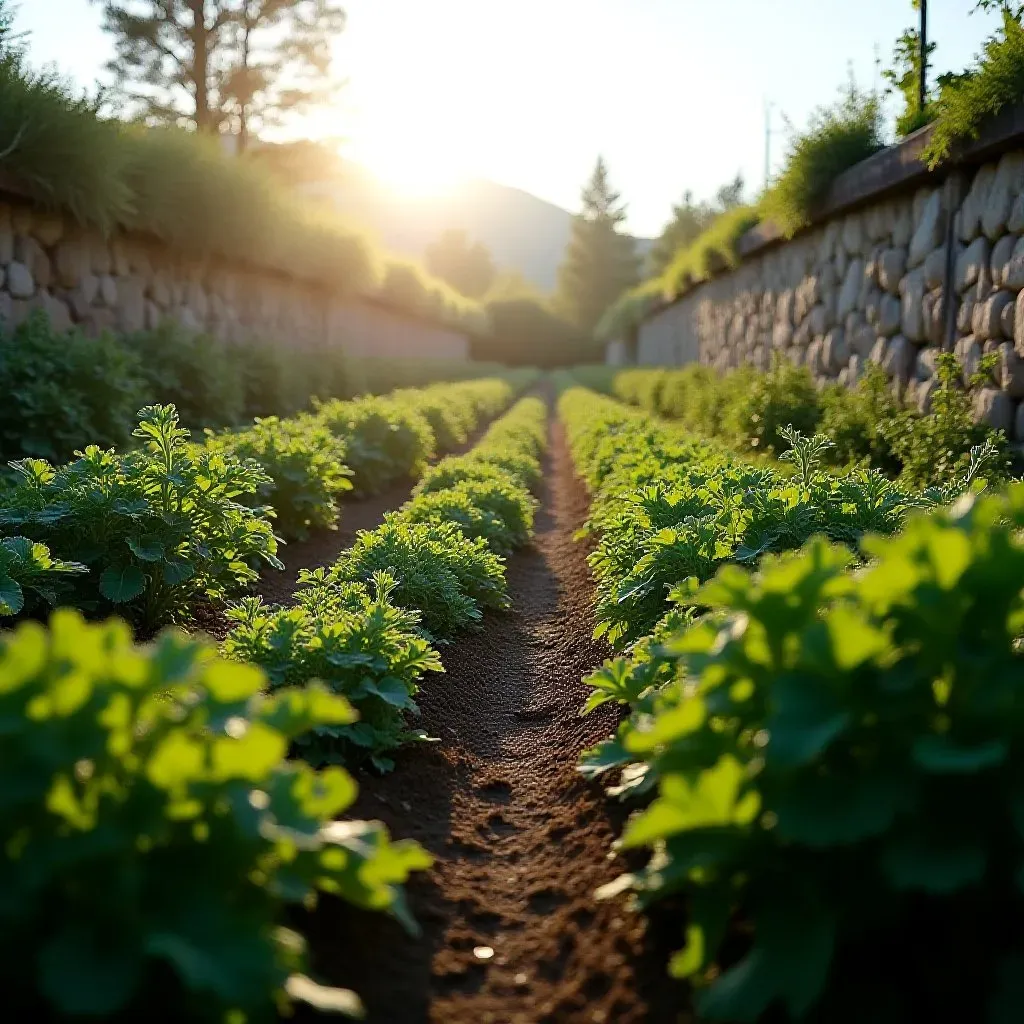Table of Contents
Growing a vegetable garden at 1000 meters altitude presents unique challenges, including cooler temperatures, shorter growing seasons, and intense sunlight. To overcome these obstacles, it's essential to choose cold-resistant vegetables, prepare the soil properly, and employ techniques such as mulching, winter fleece, and irrigation management. A well-planned crop rotation and companion planting can also help boost yields and prevent diseases. By following these guidelines and adapting to the local climate, gardeners can successfully cultivate a thriving vegetable garden at high altitude.
Question | Answer |
|---|---|
What are the main challenges of growing a vegetable garden at 1000 meters altitude? | Cooler temperatures, shorter growing seasons, and intense sunlight are the primary challenges. |
Which vegetables are suitable for growing at high altitude? | Cold-resistant vegetables such as spinach, chard, kale, carrots, and beets thrive in high-altitude conditions. |
How can gardeners protect their plants from frost and cold temperatures at high altitude? | Mulching, winter fleece, and using greenhouses or tunnels can help shield plants from frost and cold temperatures. |
What is the importance of crop rotation and companion planting in high-altitude gardening? | Crop rotation and companion planting help prevent soil depletion, diseases, and pests, while also boosting yields and promoting healthy plant growth. |
How does the growing season at 1000 meters altitude differ from that in lower-lying areas? | The growing season at high altitude is typically 2-3 weeks later than in plains, and gardeners should adjust their planting schedule accordingly. |
Les Défis d’un Potager à 1000 Mètres d’Altitude
Climat et Microclimats
At 1000 meters altitude, weather conditions differ greatly from lowlands.
- Cooler temperatures: Nights stay cold even in summer, with late spring frosts and early autumn ones.
- Shorter growing season: Frost-free period limits crop choices.
- Intense sunlight: Stronger UV rays stress plants.
- Frequent winds: They dry soil and damage young shoots.
Soil Quality in Altitude
Mountain soils often lack nutrients.
- Low in organic matter: Cold slows decomposition.
- Acidic or rocky: Excess drainage is common.
- Less fertile: Erosion and low microbial activity hurt it.
Quels Légumes Cultiver à 1000 Mètres d’Altitude?
Cold-Resistant Vegetables Ideal for Altitude
Pick varieties that handle cool nights and short seasons well.
Category | Recommended Vegetables | Planting Time | Notes |
|---|---|---|---|
Leaves | Spinach, chard, kale, Brussels sprouts, winter lettuce | March to May / August to September | Handle temps down to -5°C. |
Roots | Carrots, radishes, parsnips, beets, turnips | April to June | Thrive in cool soils. |
Fruiting | Early zucchini, peas, bush beans | May to June (after frosts) | Choose short-cycle varieties. |
Herbs | Parsley, chives, thyme, rosemary, mint | April to May | Tough and great for cooking. |
Alliums | Garlic, onions, shallots, leeks | October or February to March | Stay in ground over winter. |
Vegetables to Avoid or Grow Under Cover
Some crops need more heat, like tomatoes, eggplants, peppers, and cucumbers.
- Use a tunnel or unheated greenhouse.
- Opt for early varieties, such as 'Saint-Pierre' or 'Cherry' tomatoes.
- Add black mulch to warm the soil.
Techniques de Culture Adaptées à l’Altitude
Soil Preparation
Prepare the ground properly to handle mountain challenges.
- Drainage: Mix in sand or gravel if the soil is clay-heavy to prevent water pooling.
- Fertility: Work in homemade compost or well-rotted manure before planting.
- pH: Test the soil and aim for 6 to 7; add lime if it's too acidic.
Cold Protection
Shield plants from low temperatures to boost survival.
- Mulching: Cover soil with straw, dead leaves, or wood chips to insulate and fight frost.
- Winter fleece: Drape over young plants during late spring or early fall frosts.
- Greenhouses and tunnels: Use these to stretch the growing season, like for winter salads.
Irrigation and Water Management
Handle water carefully since high areas dry out fast.
- Regular moderate watering: Keep soil moist but avoid overdoing it to prevent diseases.
- Rainwater harvesting: Set up a collector to save water.
- Drip irrigation: Target roots directly and cut waste.
Calendrier de Plantation pour 1000 Mètres d’Altitude
Month | Actions to Take |
|---|---|
January-February | Prepare indoor seedlings (leeks, cabbages). Plan crop rotations. |
March | Sow indoors: tomatoes, eggplants (if under cover). Plant garlic, onions, spinach outdoors. |
April | Sow carrots, radishes, lettuces, peas. Transplant cabbages. |
May | Plant zucchini, beans, beets after frosts. Mulch to retain moisture. |
June-July | Harvest radishes, lettuces, spinach. Sow winter cabbages and chard. |
August-September | Sow autumn spinach and radishes. Protect squashes from night cold. |
October-November | Harvest last vegetables. Plant garlic for next year. Cover soil with green manure (vetch, rye). |
Associations de Plantes et Rotation des Cultures
Companion Planting
Pair plants to boost yields and fight pests.
- Carrots with onions or garlic: Keeps carrot flies away.
- Tomatoes with basil: Enhances flavor and stops aphids.
- Beans, corn, and squash (Three Sisters method): Saves space and adds soil nutrients.
Crop Rotation
Switch crops yearly to prevent soil depletion and diseases.
- Year 1: Leafy veggies like spinach and salads.
- Year 2: Root crops like carrots and turnips.
- Year 3: Fruiting plants like tomatoes and zucchini.
- Year 4: Legumes like peas and beans to fix nitrogen in soil.
